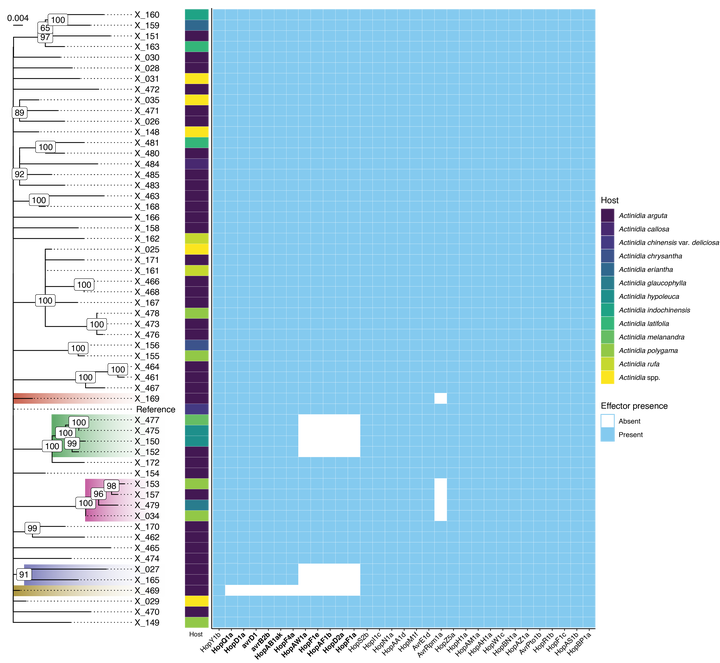Identification and characterization of innate immunity in Actinidia melanandra in response to Pseudomonas syringae pv. actinidiae

Abstract
Pseudomonas syringae pv. actinidiae biovar 3 (Psa3) has decimated kiwifruit orchards growing susceptible kiwifruit Actinidia chinensis varieties. Effector loss has occurred recently in Psa3 isolates from resistant kiwifruit germplasm, resulting in strains capable of partially overcoming resistance present in kiwiberry vines (A. arguta, A. polygama, and A. melanandra). Diploid male A. melanandra recognises several effectors, sharing recognition of at least one avirulence effector (HopAW1a) with previously studied tetraploid kiwiberry vines. Sequencing and assembly of the A. melanandra genome enabled the characterisation of the transcriptomic response of this non-host to wild-type and genetic mutants of Psa3. A. melanandra appears to mount a classic effector-triggered immunity (ETI) response to wildtype Psa3 V-13, as expected. Surprisingly, the type III secretion (T3S) system-lacking Psa3 V-13 ∆hrcC strain did not appear to trigger pattern-triggered immunity (PTI) despite lacking the ability to deliver immunity-suppressing effectors. Contrasting the A. melanandra responses to an effectorless Psa3 V-13 ∆33E strain and to Psa3 V-13 ∆hrcC suggested that PTI triggered by Psa3 V-13 was based on the recognition of the T3S itself. The characterisation of both ETI and PTI branches of innate immunity responses within A. melanandra further enables breeding for durable resistance in future kiwifruit cultivars.